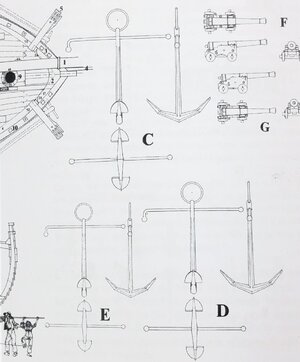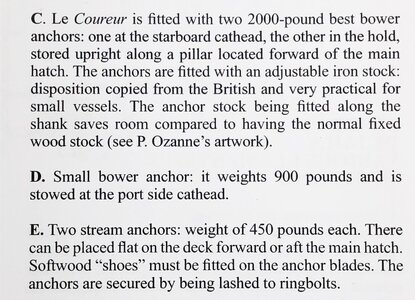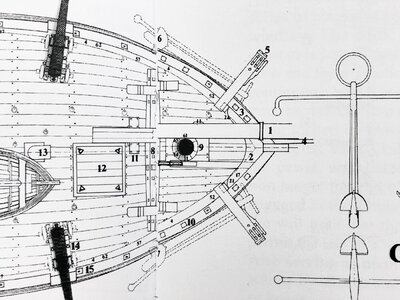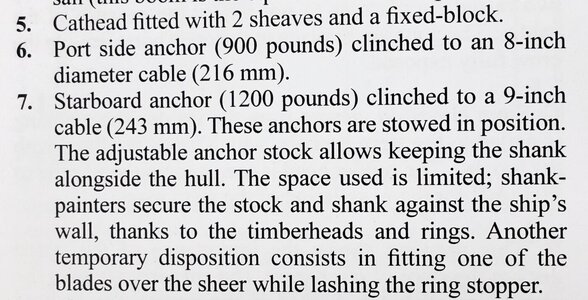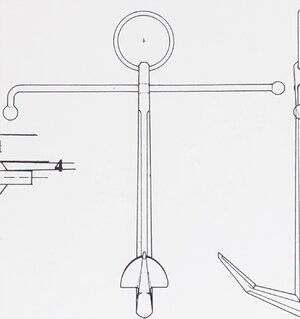Kurt Konrath
Kurt Konrath
Grand work as normal, are you ready to take orders for hooks for all members of the group build.
 |
As a way to introduce our brass coins to the community, we will raffle off a free coin during the month of August. Follow link ABOVE for instructions for entering. |
 |
Thank you Jim for your comprehensive and compact information, very helpful.I hope Uwe doesn't mind jumping for the answer, though he might object or add additional information available on his hand.
let's begin with a little bit of history.
In the age of sail, a ship carried a variety of boats of various sizes and for different purposes.
In the navies, they were:
- the launch, or long-boat, the largest of all rowboats on board, which was of full, flat, and high built
- the barge, the next in size, which was employed for carrying commanding officers, with ten or twelve oars
- the pinnace, which was used for transporting subordinate officers, with six or eight oars
- the yawl, a smaller pinnace
- the cutter, which was shorter and broader than the long-boat and used for the transfer of goods
- the jolly-boat, used for light work
- the gig, a long narrow boat, employed for expeditious rowing and fitted with sails, and belonging to the captain
A merchant ship usually carried on board
Being LeCourier is the Luger-type ship, and relatively small size, she carried only one boat - the cutter. Depending on the weather or combat situations, the boat is stored on the deck or towed behind the ship.
- the launch or long-boat
- the skiff, the next in size and used for towing or kedging
- the jolly-boat or yawl, the third in size
- the quarter-boat, which was longer than the jolly-boat and named thus because it was hung on davits at a ship's quarter
- the captain’s gig, which was one of the quarter boats
Cutters as ship's boats came into use in the late 17th and early 18th centuries. These were mostly clinker-built open boats that were fitted for propulsion by both oar and sail. They were more optimized for sailing than the barges and pinnaces that were types of ship's boats widely used to transport. The one distinctive resulting feature of this was the wash strake added to increase the freeboard. It was pierced with rowlock cut-outs for the oars so that the thwarts did not need to be set unusually high to achieve the right geometry for efficient use.
Please check out the drawings of the 18th foot cutter (from Alert 1777). The #7 represents the wash strake, and #6 is the pierced rowlock cut-outs for the oars.
View attachment 267944
As you can see, not all the ship's boats will require cap railings. There are different types and ways to secure rowlocks.

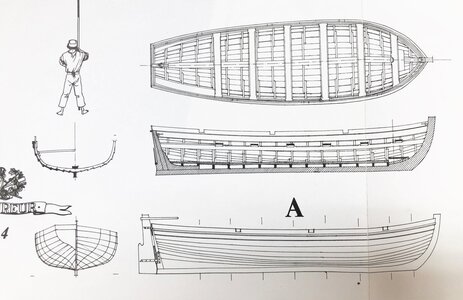

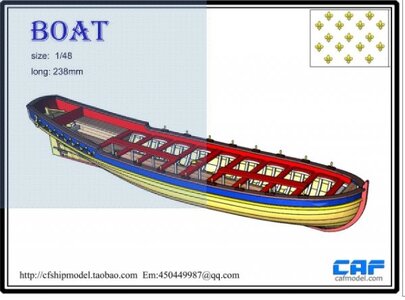
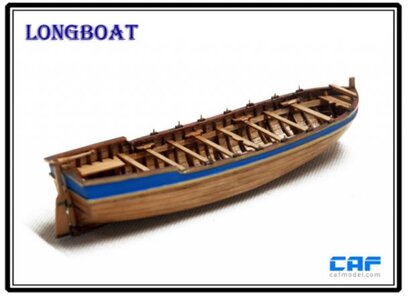
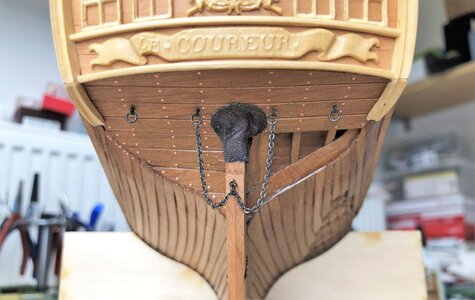
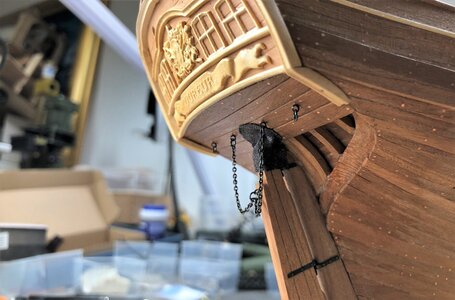
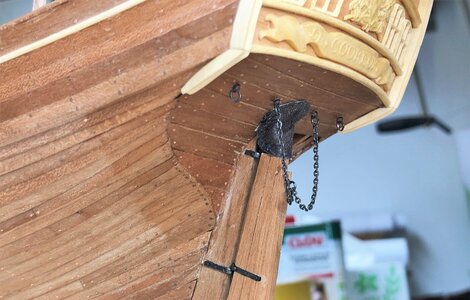
Boudriot showed only two, which are the connections for the rudder-chain - I thought, that there will be some additional ringbolts necessary f.e. to fix a boat to the stern near sea level etc. - you know on the sides are also some "empty" ringbolts shown and necessary, so why not at the stern.I'm sure you have a reason why you have 4 rings instead of the 2 as shown at Boudriot, attached to the stern.

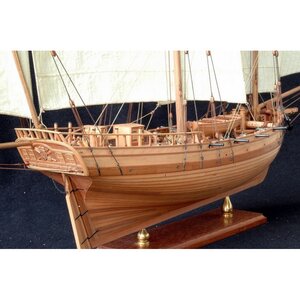
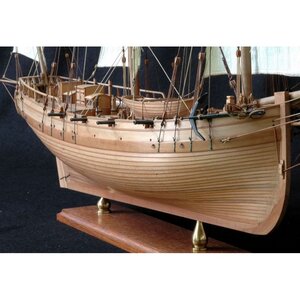
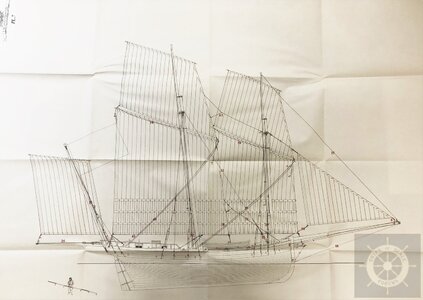
I thought you will say: "Since then, she is no longer my wife"Since then, she has fulfilled many of my wishes!

There is no doubt that you have won a supportive and accommodating wife,Hahaha Jim! We have been married for decades and she accepts my passion for model making and always chooses a destination for every holiday in which my wishes are taken into account.
Best regards
Thomas
Hallo Thomas,Yes Uwe, it's the little parts that make me creep around a model forever. My wife has wanted to go on for a long time, but I'm still tied up - how was that done, etc.
The worst thing was on my honeymoon in Paris when I was able to look at the maritime museum from the Eiffel Tower and my wife said: No, we won't visit the museum.
Since then, she has fulfilled many of my wishes!
Best regards
Thomas
Hi guys, this sounds kind of familiar. it is similar for me.Hallo Thomas,
when the museum is reopened after the renovation, we should go together to Paris...... I was also not able until now to see it.
My wife is acting differently: She is not interested in ships, so she is accepting everything what I do (or buy) related to my hobby.
There is only one requirement defined by her: She is going for shopping, when I visit a museum.
I am looking forward to see you (and wife + daughter) in Augsburg ......
